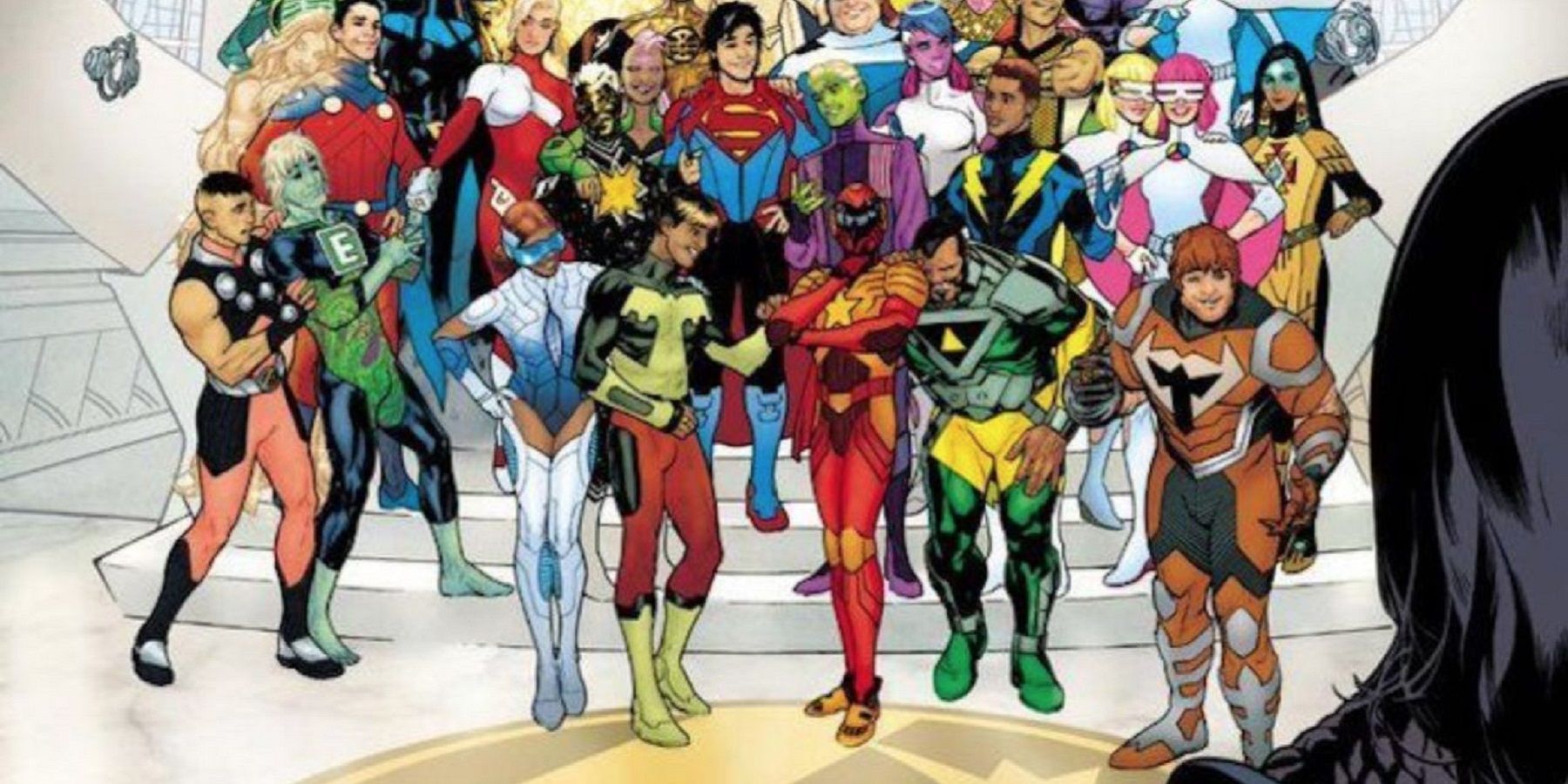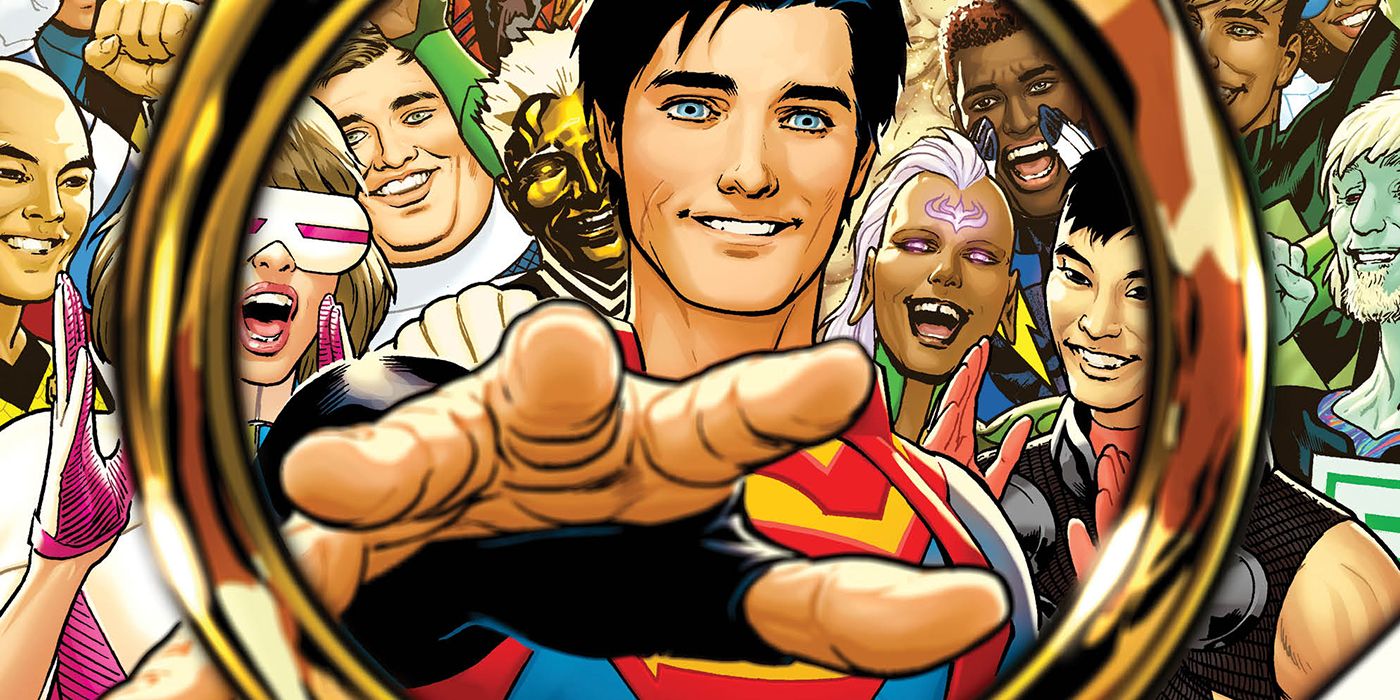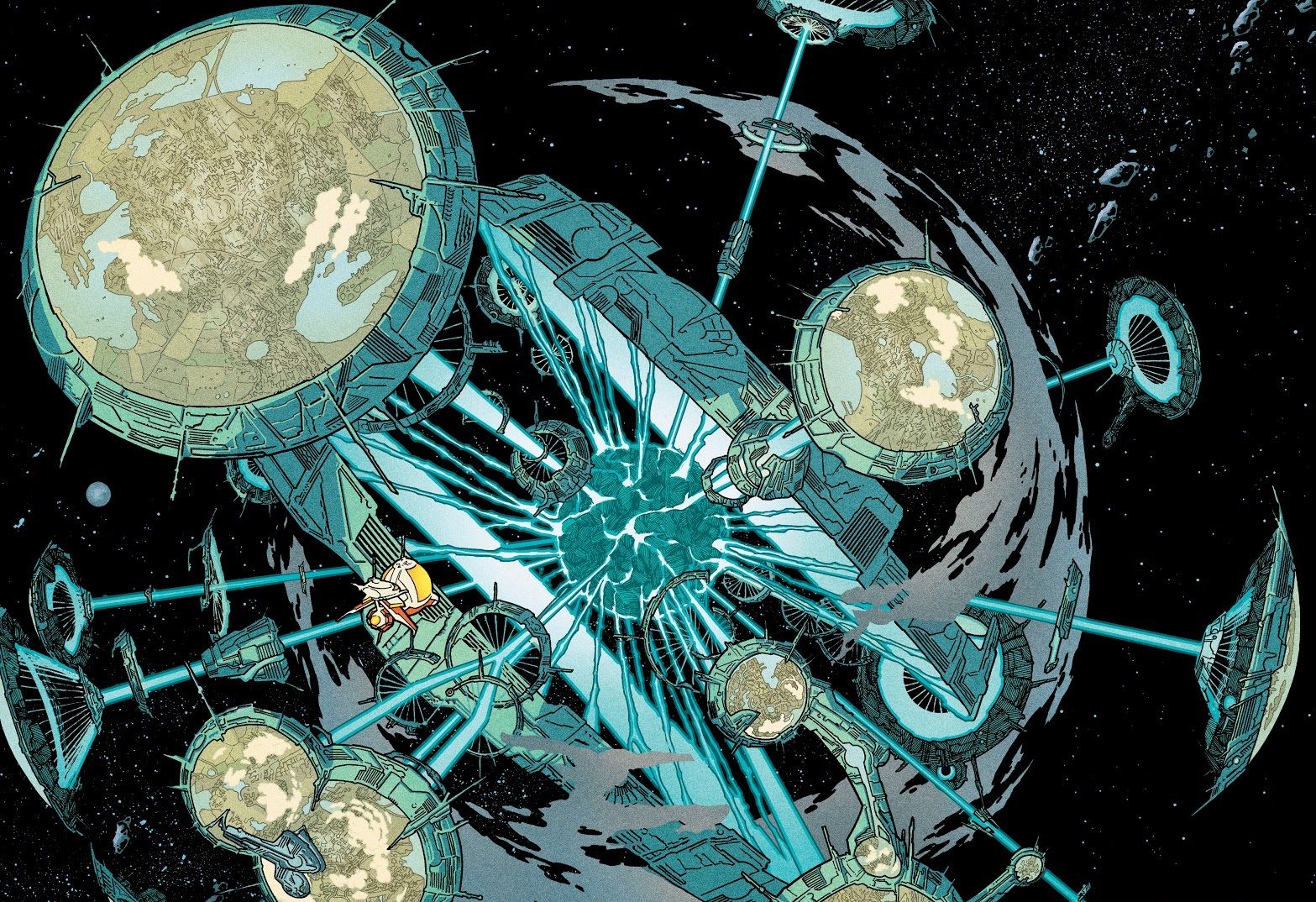
Warning: The following contains spoilers for Legion of Super-Heroes: Millenium #2 by Brian Michael Bendis, Nicola Scott, Jim Cheung, Jeff Dekal, and Ryan Sook
The new Legion of Super-Heroes is fortifying the future of the DC Universe. Beyond reintroducing the futuristic team into the modern era, Millenimum has also found subtle ways to tie the disparate potential futures of the DC Universe into a single timeline.
Much like the way Crisis crossovers have been used in the past to consolidate concepts and combine them into a single universe, Legion of Super-Heroes is tying together all the possible fates of the DC Universe into a single timeline.

Across two issues, the seemingly immortal Rose journeys around the world. Her adventures tie together all the potential futures of the DC Universe into a singular through-line, all centering with her. Coming to terms with the full extent of her powers, Rose tries to work with President Supergirl to deal with the eventual emergence of Thorn, who becomes an anti-hero in the same Neo-Gotham that a version of Batman Beyond operates within. While there's a completely different reality that contains the current exploits of that character, Millenium ties similar events into the mainline future of the DC Universe. Despite the efforts of the heroes of the future however, the future eventually becomes the post-apocalyptic landscape that Kamandi has always dealt with. But the world eventually rebuilds (somewhat around the Science Police) leading to the day and age of Tommy Tomorrow.
Rose enters a museum in the 25th century, dedicated to the events of the present day. Some of the exhibits are of famous incidents, such as the battle between Superman and Doomsday. Others are in the process of being reintroduced into current continuity, such as the JSA. There are even mentions of all the Crises that happened over the years, with a museum attendant named Michael (who's implied to be a pre-heroic turn Booster Gold) speaking about the era and its changes with a nostalgic glint in his eye.

But as the story progresses, it ties together other elements of the DC Universe. OMAC is revealed to have happened in a far future removed from super-heroics. Michael spoke about how corporate the world had become in the 25th century, but by the time of OMAC, Intercorp had practically taken over the entire planet. Rose ends up having to assist him when Intercorp was trying to take over OMAC and turn him into a genuine threat. The horrors of the world finally seem to break Rose's resolve, pushing her back into action like Thorn. Despite OMAC's insistence that the world is worth fighting for, Rose leaves the planet and explores the cosmos before finally making the return to her birth-planet.
New Earth isn't even really the planet Earth anymore. Now it's largely artificial, comprised of multiple domed floating cities. All the cities seem to be connected to an energy core at the center of what used to be the planet. The various destructions of the world have taken effect on the planet, radically altering it into the new future that's on display. It creates an exciting new twist on the fate of the planet, allowing for any number of world-shaking events to alter the planet.

The strange and shocking future of Earth now has a definite future. There's a timeline to events that lead to the newly changed reality of the Legion. By doing this, Millenium accomplishes what many crisis crossovers set out to do and simplify the universe. But instead of retconning ideas and concepts out of continuity, Millenium ties them all together to make a cohesive throughline. All of the far-off potential futures of the DC Universe now bleed into one another, informing and transforming the future comes after it.
Like Crisis on Infinite Earths did with combining all of the parallel earths into one world, Millenium is about fusing all the futures together. It might have the same kind of impact on the greater DC Universe, laying out a defined future for the reality that reaches the highs of President Supergirl and the lows of the Great Disaster. It also makes the eventual evolution of the Legion a more monumental moment within the universe. It shows that despite all the troubles that the human race is forced to face across thousands of years, the species still has it in them to help forge something better.
It even does one better than the universe-altering Crisis stories by leaving so much of the timeline open for new stories. While there are major landmarks within the timeline, they don't answer every question about what fully happens within the future of the universe. It leaves plenty of room for future stories, while still allowing them to operate around specific events that have been laid out.
Add Comments